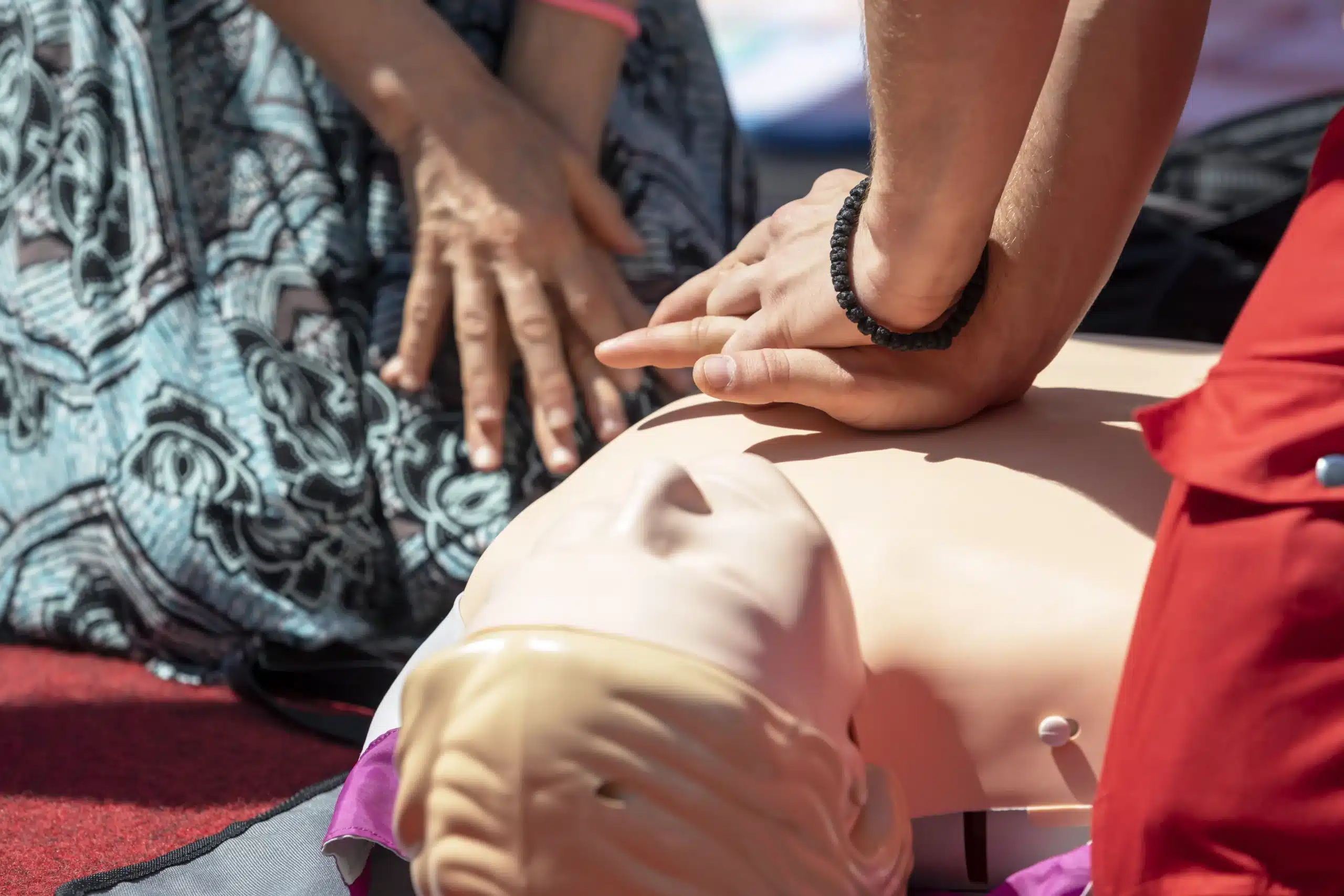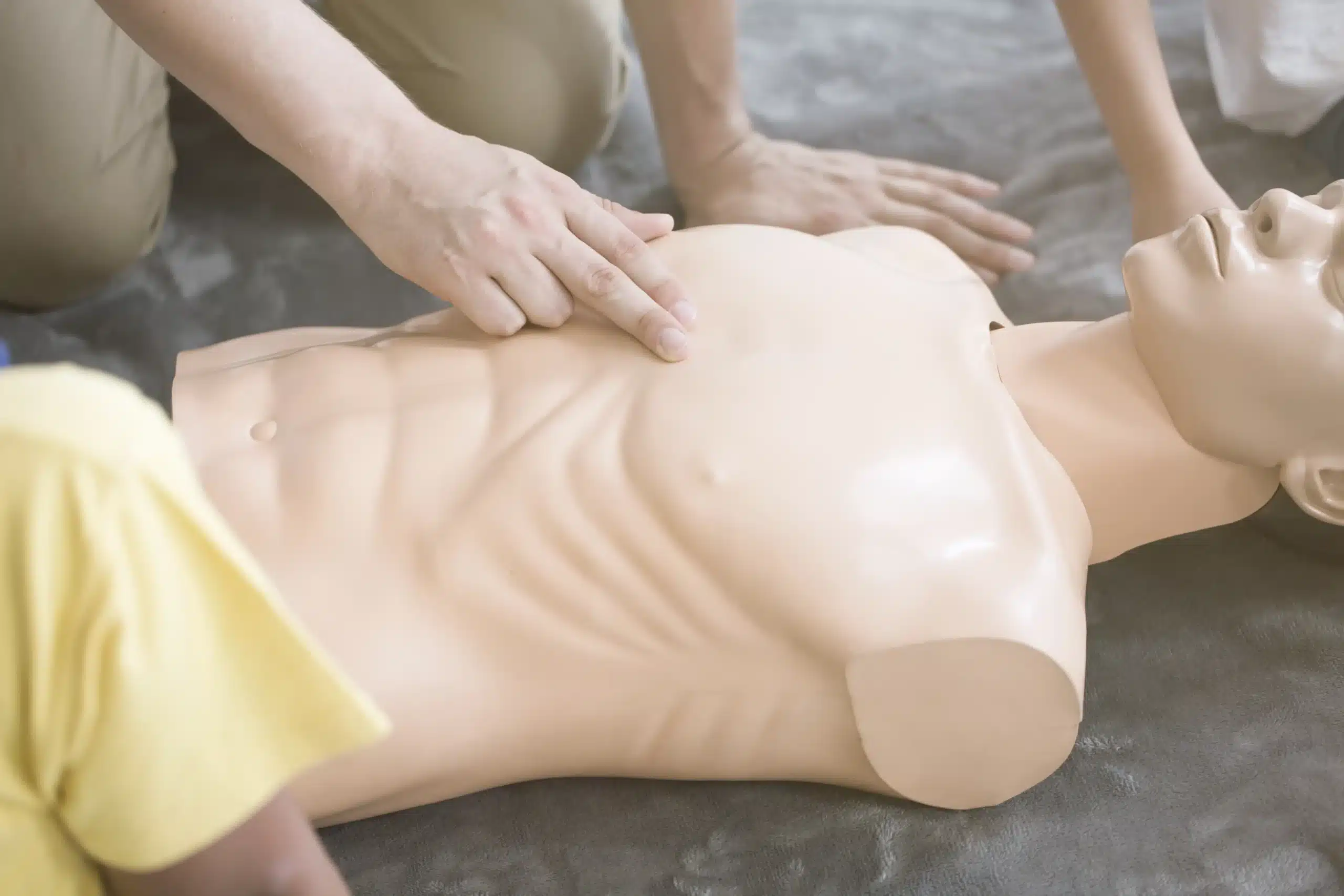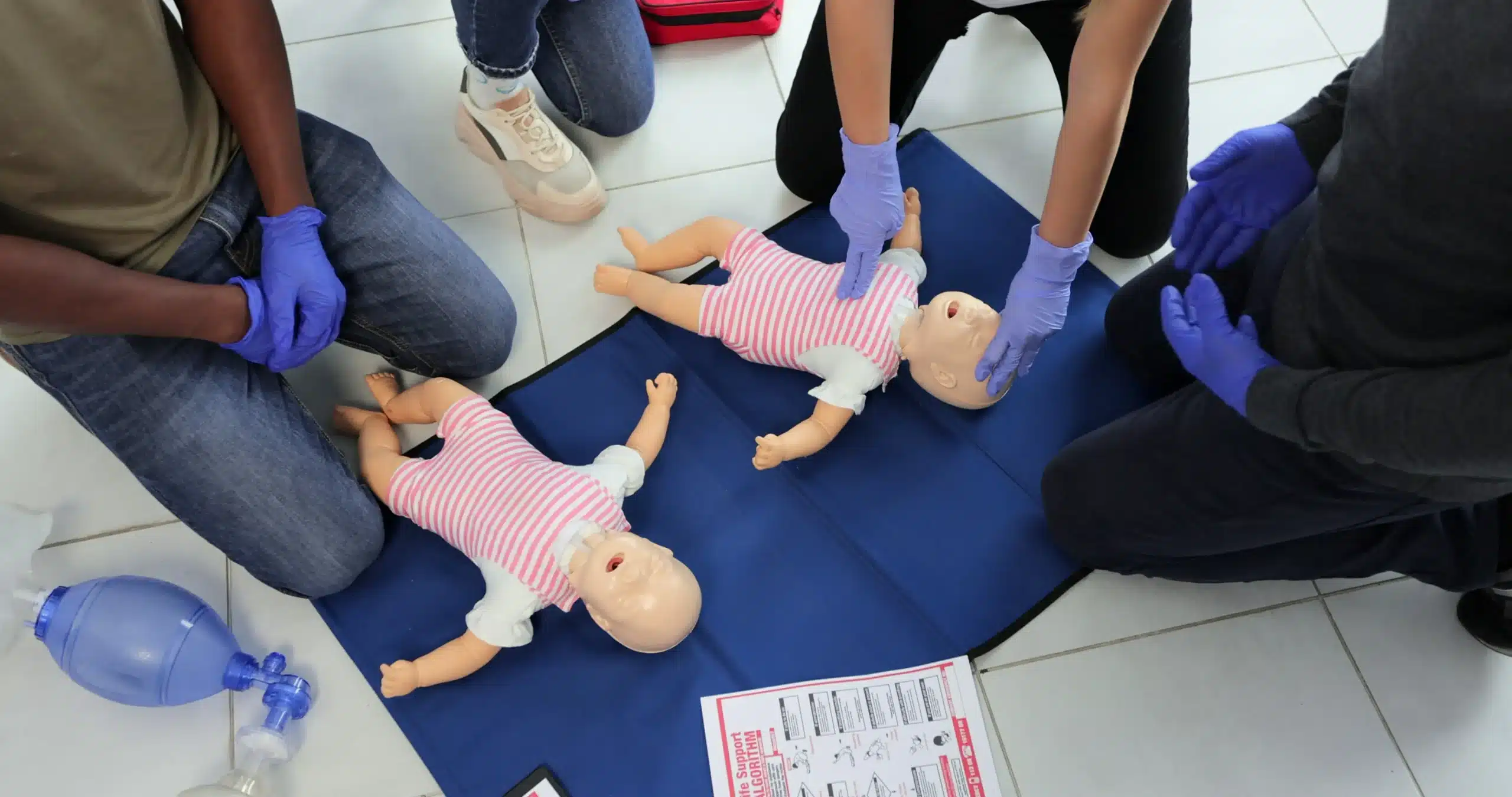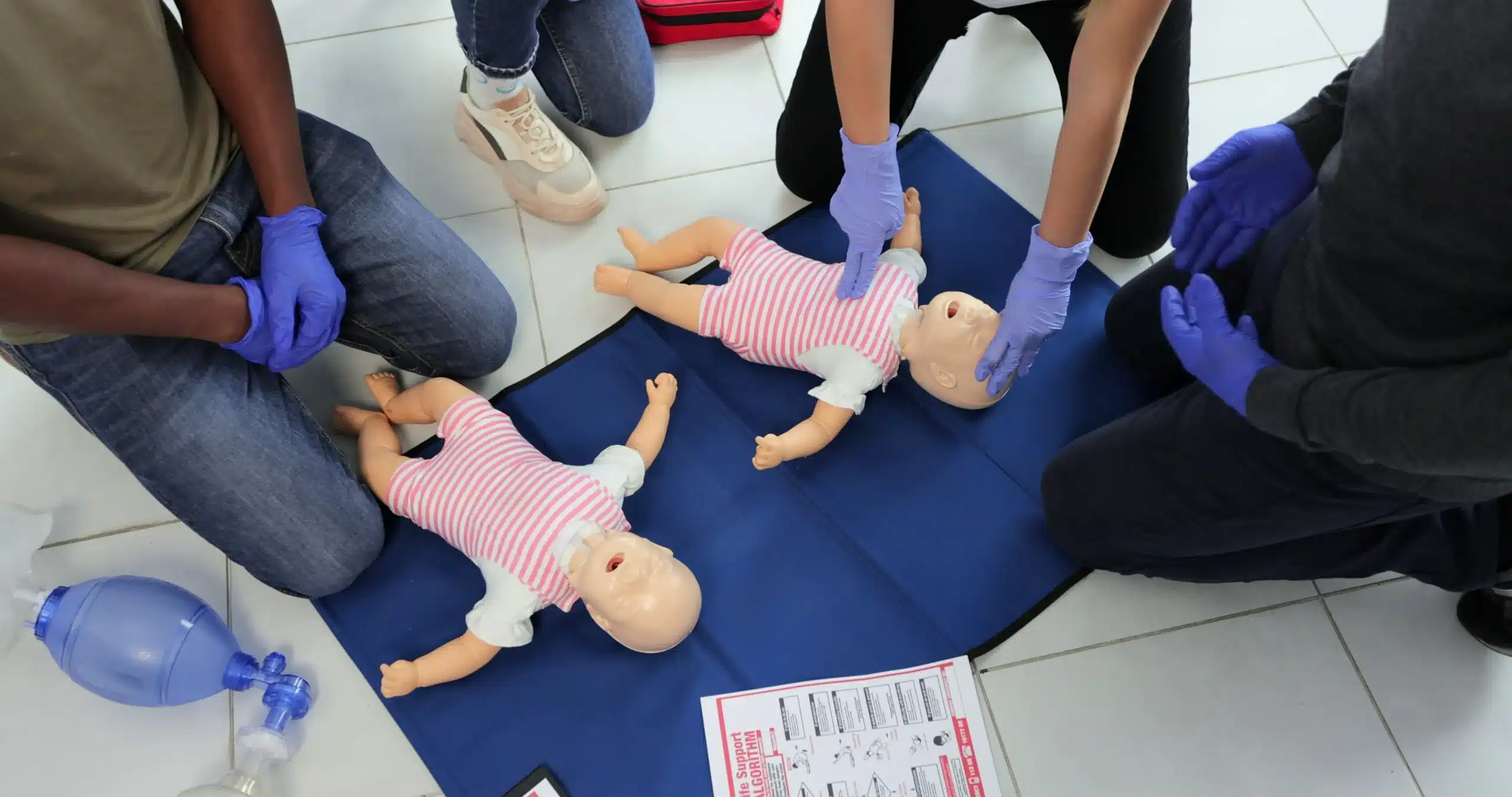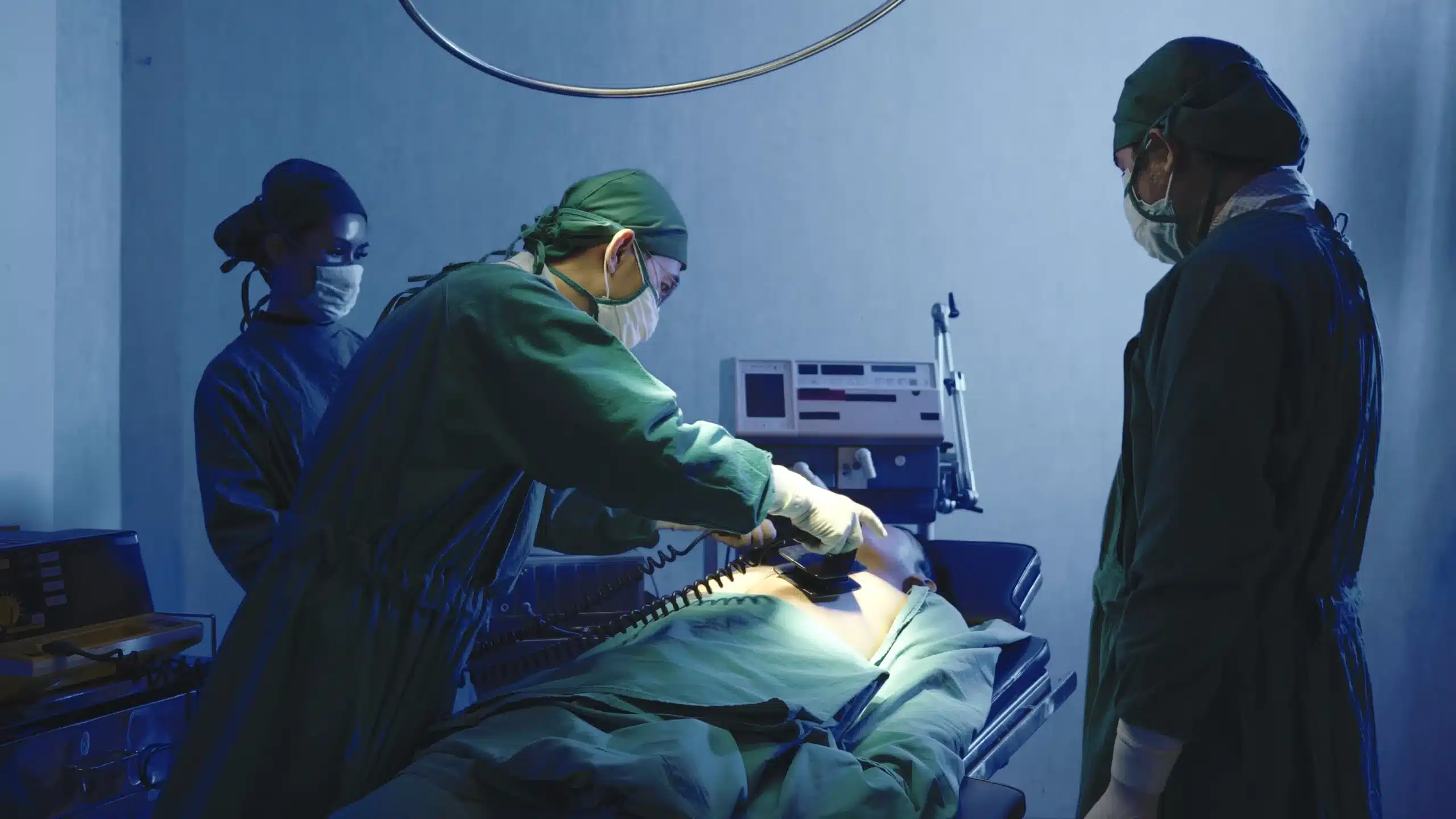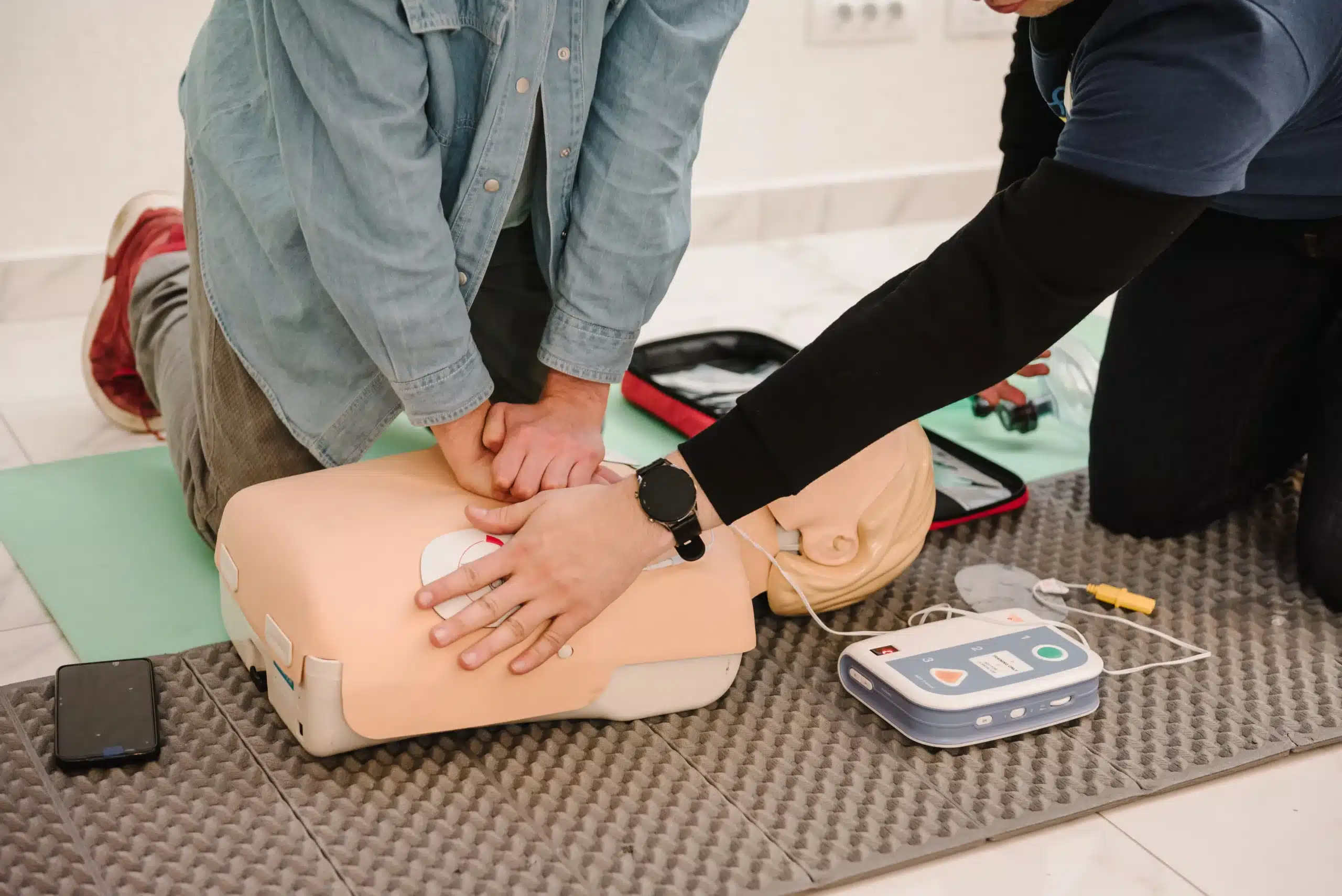In the face of a medical emergency, seconds can matter. CPR can be the difference between life and death, and knowing how to perform it is an invaluable skill. This guide is your go-to resource for finding CPR courses in Alameda. We’ll cover everything from the basics of CPR to more advanced certifications like BLS, ACLS, and PALS. We’ll also address common concerns, debunk myths, and provide practical tips for maintaining your skills. Whether you’re a healthcare provider, work with children, or simply want to be prepared for any situation, this guide will help you find the right CPR training in Alameda.
Key Takeaways
- CPR certification equips you to handle emergencies: Find the right CPR course, from basic to advanced (like ACLS and PALS), to suit your needs and career goals. Safety Training Seminars offers a range of options to build your life-saving skills.
- CPR training fits your budget and schedule: Explore in-person, online, or blended learning formats. Group discounts and low price guarantees make training accessible to everyone.
- Stay CPR-ready with regular practice: Refresh your skills and knowledge through consistent review, refresher courses, and teaching others. Maintain your confidence and ability to respond effectively in any situation.
What is CPR and Why is it Important?
Cardiopulmonary Resuscitation (CPR) is a life-saving technique used when someone’s breathing or heartbeat has stopped. This can happen during a heart attack, near-drowning, or other medical emergencies. CPR involves chest compressions and rescue breaths that circulate oxygenated blood to the brain and other vital organs. Learning and performing CPR can empower you to make a real difference in a critical situation, potentially doubling or even tripling a person’s chance of survival following cardiac arrest. For more information on the impact of CPR and how it saves lives, explore these CPR education resources.
Cardiac arrest is a serious medical emergency, affecting hundreds of thousands of Americans each year. The Alameda County Fire Department provides information on CPR and AED training, emphasizing how important quick action is during these events. CPR, especially when combined with the use of an AED, can dramatically improve survival rates if performed in the first few minutes. Because time is of the essence, widespread CPR knowledge is crucial for community health. Most cardiac arrests happen outside of a hospital, which is why bystander CPR is so essential. When someone nearby knows CPR, they can provide immediate assistance while waiting for professional medical help.
CPR Courses in Alameda: What Are Your Options?
Choosing the right CPR course depends on your specific needs and career goals. Here’s a breakdown of the different CPR certifications available in Alameda.
Basic Life Support (BLS)
Basic Life Support (BLS) certification is the foundation for anyone interested in learning CPR. These courses cover essential life-saving techniques, including high-quality CPR for adults, children, and infants, how to use an Automated External Defibrillator (AED), and how to help someone who is choking. BLS certification is often a requirement for healthcare providers, but it’s a valuable skill for anyone. Safety Training Seminars offers AHA-certified BLS courses in Alameda, ensuring your training is based on the latest scientific guidelines. Your BLS certification will be valid for two years.
Advanced Cardiovascular Life Support (ACLS)
Advanced Cardiovascular Life Support (ACLS) certification goes beyond the basics of CPR. It’s designed for healthcare professionals who are often the first responders in cardiovascular emergencies. These courses teach participants how to recognize and manage life-threatening conditions like cardiac arrest, stroke, and other respiratory emergencies. Like BLS, ACLS certification is valid for two years and is offered through Safety Training Seminars.
Pediatric Advanced Life Support (PALS)
Pediatric Advanced Life Support (PALS) certification focuses on the specific needs of infants and children facing medical emergencies. This course is essential for healthcare providers working with young patients. PALS training covers pediatric resuscitation, emergency cardiovascular care, and the assessment and treatment of critically ill infants and children. Safety Training Seminars offers PALS certification, giving you the skills and confidence to respond effectively.
First Aid and CPR
Combining First Aid and CPR training provides a well-rounded approach to emergency preparedness. These courses teach you how to respond to a wide range of situations, from minor injuries to life-threatening emergencies. You’ll learn basic first aid procedures, such as wound care and treating burns, in addition to CPR and AED use. Several organizations in Alameda offer combined First Aid and CPR courses, including Safety Training Seminars. The Alameda County Fire Department also provides free Hands-Only CPR and AED training for the community.
Where to Get CPR Certified in Alameda
Finding the right CPR certification course can feel overwhelming, but several excellent resources are available right here in Alameda. Let’s explore some of your options so you can choose the best fit for your needs.
American Heart Association Certified Courses
The American Heart Association (AHA) sets the standard for high-quality CPR training. AHA-certified courses cover the latest life-saving techniques and award certifications valid for two years. This ensures you’re equipped with the most up-to-date knowledge and skills. You can find a list of AHA-certified training centers and courses on the American Heart Association website.
Safety Training Seminars
If you’re looking for comprehensive training options in Alameda, check out Safety Training Seminars. They offer a wide range of AHA-certified courses, including BLS, ACLS, PALS, and First Aid. They also provide specialized training like the EMSA Child Care Health & Safety course designed for California childcare providers. With daily classes and some courses offering online components, they make it easy to fit training into your schedule. Plus, they offer a low price guarantee for Alameda County.
Alameda County Fire Department
For a free introduction to CPR, the Alameda County Fire Department (ACFD) offers Hands-Only CPR and AED training. While this valuable community program doesn’t provide official certification, it empowers you with basic life-saving skills to respond to cardiac arrest emergencies.
Red Cross
The American Red Cross is another well-respected provider of CPR and first aid training. They offer a variety of certification courses designed to prepare you for various emergency situations. You can find a class near you on their website.
CPR Course Formats and Duration: What to Expect
Understanding the different CPR course formats and their time commitments can help you choose the best option for your schedule and learning style. Let’s break down what you can expect from in-person, online, and hybrid courses.
In-Person Training
In-person CPR training offers a hands-on learning experience guided by qualified instructors. These classes cover essential techniques, including CPR for adults, children, and infants, how to use an AED (Automated External Defibrillator), and other basic life support skills. Experienced instructors create a supportive environment for learning and practicing these crucial skills. The in-person format allows for immediate feedback and personalized guidance, ensuring you feel confident in your abilities.
Online and Hybrid Courses
For those seeking flexibility, online and hybrid CPR courses provide a convenient alternative. Hybrid courses often combine online learning with an in-person skills session. The RQI program, for example, offers a blended learning approach with an online component and a hands-on skills evaluation using a voice-assisted mannequin. This format can be a fast track to certification, with same-day card issuance often available. Many students find the online portion engaging and easy to follow, making it a great option for those who prefer self-paced learning.
Time Commitment for Certification
The time commitment for CPR certification varies depending on the course type and provider. Some basic CPR and AED training sessions can be completed in as little as 10–15 minutes, though these shorter sessions may not provide a certification card. More comprehensive courses, including those covering first aid and BLS, may require a few hours. CPR certification is typically valid for two years, after which you’ll need recertification to maintain your credentials. When choosing a course, consider the depth of training you need and the time you have available.
CPR Course Costs & Discounts in Alameda
Knowing the price range for CPR certification in Alameda helps you budget effectively and find the best value. Let’s break down the typical costs and explore some smart ways to save.
Average Certification Cost
CPR certification courses in Alameda typically range from $75 to $150. Several factors influence the final price, including the level of certification (CPR/AED, BLS, ACLS, PALS, etc.), the course format (in-person or blended learning), and the training provider. Safety Training Seminars offers competitive pricing on all our courses, from basic CPR and First Aid to advanced certifications like ACLS and PALS. Check our website for the most up-to-date pricing information.
Group Discounts and Special Offers
Training a group? Many CPR training providers, including Safety Training Seminars, offer group discounts to make training more affordable. This is a great option for businesses, schools, community groups, or anyone looking to certify multiple people at once. Contact us to discuss your group’s specific needs and how we can tailor a class for you.
Low Price Guarantees
At Safety Training Seminars, we believe that everyone should have access to high-quality CPR training. We offer the lowest prices in Alameda County for our comprehensive CPR courses. This commitment to affordability makes it easier than ever to gain these essential, life-saving skills.
Benefits of CPR Training
Learning CPR offers significant advantages, from personal preparedness to career advancement and community impact. Let’s explore some key benefits:
Prepare for Emergencies
Emergencies can happen anytime, anywhere. Knowing CPR equips you to respond effectively in critical situations, especially those involving cardiac arrest. CPR can double or even triple a person’s chance of survival, a powerful reason to become certified. Since about 70% of cardiac arrests occur outside of a hospital setting, bystander CPR becomes absolutely crucial. Your quick actions can make all the difference before professional help arrives. Consider signing up for a CPR class to prepare yourself for these situations.
Advance Your Career
Many professions, especially in healthcare, education, and fitness, require or highly recommend CPR certification. Having this qualification on your resume demonstrates your commitment to safety and preparedness, making you a more desirable candidate. CPR training can open doors to new opportunities and show potential employers you’re a valuable asset. It also provides a sense of confidence and competence in your ability to handle emergencies in the workplace. For those looking to advance their careers, CPR certification is a worthwhile investment.
Improve Community Safety
CPR-trained individuals contribute to a safer community. When more people know CPR, the chances of someone receiving immediate assistance during a cardiac arrest increase dramatically. The first few minutes are critical, and immediate CPR and AED use within 3-5 minutes significantly improves survival rates. By becoming certified, you become a vital link in the chain of survival, potentially saving lives in your community. Even free, non-certification CPR and AED training can empower individuals to take action and make a difference. Learn how to improve community safety by becoming CPR certified.
Choosing the Right CPR Course
Knowing which CPR course is right for you depends on your specific needs and career path. Let’s break down the options to help you make the best decision.
For Healthcare Professionals
Healthcare professionals like doctors, nurses, and EMTs face unique challenges in emergency situations. You need comprehensive training to handle a wide range of scenarios. Courses like Basic Life Support (BLS), Advanced Cardiovascular Life Support (ACLS), and Pediatric Advanced Life Support (PALS) are often required and provide the in-depth knowledge you need. These certifications equip you with the skills to manage respiratory and cardiac arrest, administer medications, and work effectively as part of a team. Safety Training Seminars offers all of these advanced certifications to keep you prepared for any critical situation.
For Childcare Providers and Educators
Working with children means being prepared for anything. For childcare providers, teachers, and camp counselors, a specialized CPR course focusing on pediatric emergencies is essential. These courses cover CPR techniques specifically designed for infants and children, addressing their unique physiological differences. EMSA Child Care Health & Safety training is another valuable resource, covering a broader range of health and safety topics relevant to childcare settings. Having this specialized training gives you the confidence to respond effectively in an emergency and provides parents with peace of mind.
For the General Public
Even without a medical background, learning CPR can empower you to save a life. CPR and First Aid certification provides fundamental skills to respond to emergencies like choking, cardiac arrest, and other medical situations. While not as advanced as BLS, ACLS, or PALS, these courses give you the tools to provide immediate assistance until professional help arrives. Knowing basic CPR can make a world of difference in the critical moments before paramedics arrive. Consider getting certified – it’s a valuable skill that could one day save someone you love.
Getting CPR Certified: The Process
Getting CPR certified is straightforward, designed to equip you with life-saving skills. Here’s what to expect:
What Happens During Training?
CPR (Cardio-Pulmonary Resuscitation) is a life-saving technique. Knowing CPR can dramatically increase a person’s chance of survival during cardiac arrest. In a CPR class, you’ll learn the essential steps, including recognizing cardiac arrest, when to call 911, and how to perform chest compressions and rescue breaths. Your instructor will guide you, explaining each step and answering any questions. Many courses, like those at Safety Training Seminars, also cover AED (Automated External Defibrillator) use and basic life support.
Hands-On Practice and Skills Assessment
CPR training is highly interactive. You’ll use a CPR training mannequin to practice techniques, developing muscle memory and getting comfortable with compressions and breaths. You’ll learn exactly where and how hard to press for effective chest compressions. The skills assessment involves demonstrating your CPR proficiency to your instructor, who will observe your technique and provide feedback.
Certification and Renewal
After successfully completing the course and skills assessment, you’ll receive your CPR certification card, typically valid for two years. To maintain your certification and skills, you’ll need recertification. Refresher training reinforces techniques and keeps them fresh in your memory, ensuring you’re always prepared to respond effectively in an emergency.
How to Keep Your CPR Skills Sharp
Knowing CPR can empower you to respond effectively during medical emergencies. But like any other skill, CPR requires regular practice to stay sharp. Let’s explore some simple yet effective ways to maintain your CPR proficiency and confidence.
Practice Regularly
Consistent practice is key to retaining CPR skills. Think of it like riding a bike—the more you do it, the more natural it becomes. Set aside time each month to review the steps of CPR, including chest compressions and rescue breaths. You can practice on a mannequin or even use a pillow to simulate the process. This regular review reinforces the techniques and keeps them fresh in your memory, preparing you to act quickly and efficiently in a real emergency.
Take Refresher Courses
While regular practice is essential, staying up-to-date with the latest CPR guidelines is equally important. Medical knowledge and best practices are always evolving, and refresher courses ensure your skills align with current recommendations. Consider taking a recertification course every year, either online or in person. These courses reinforce your existing knowledge and introduce you to any recent changes in CPR techniques, maintaining your confidence and ensuring you’re providing the most effective care.
Teach Others
One of the most effective ways to solidify your CPR skills is to teach them to others. Sharing your knowledge with friends, family, or colleagues reinforces your understanding and helps them gain a valuable life skill. Talking through the steps, demonstrating the techniques, and answering questions can significantly deepen your own understanding of CPR. You’ll also be contributing to a more prepared and safety-conscious community.
Common CPR Myths Debunked
It’s easy to put off learning CPR. Maybe you’re worried about doing it wrong, hurting someone, or the idea of mouth-to-mouth makes you uncomfortable. These are valid concerns, but they shouldn’t prevent you from getting trained. Let’s clear up some common misconceptions about CPR.
Addressing Fears and Misconceptions
One of the biggest myths is that only medical professionals can perform CPR. This isn’t true. Anyone can learn CPR—in fact, it’s encouraged! Emergency First Response emphasizes that everyday people are often the first on the scene of an emergency, making their knowledge of CPR critical. Safety Training Seminars offers CPR and First Aid certification courses designed for everyone, from healthcare providers to concerned parents. Don’t let fear hold you back from potentially saving a life.
Understanding CPR in Practice
Another misconception is that CPR always works. Sadly, this isn’t the case. CPR Baton Rouge clarifies that while CPR significantly increases the chances of survival, it doesn’t guarantee a positive outcome. However, even if CPR doesn’t revive someone, it can still help maintain vital functions until professional help arrives. Some also believe you must perform CPR continuously until medical help arrives. While continuous CPR is ideal, it’s understandable to pause briefly to call 911 or to use an AED, as explained by San Francisco CPR Classes. Our instructors at Safety Training Seminars will guide you through these steps so you feel confident in any emergency situation. We also offer group discounts for families, businesses, or community groups.
The Importance of Bystander CPR
Around 70% of cardiac arrests occur outside of a hospital, meaning bystanders are often the first line of defense. Immediate CPR and AED use within 3-5 minutes dramatically improves survival rates, according to the Alameda County Fire Department. Learning CPR empowers you to act quickly and effectively in these crucial moments. You can find convenient and affordable CPR training options through our low price guarantee. Becoming CPR certified means you’re not just prepared for emergencies; you’re equipped to make a real difference in your community.
Related Articles
- The Importance of CPR in Saving Lives – Alameda CPR Classes
- CPR Certification in Alameda: Your Comprehensive Guide – Alameda CPR Classes
- Free CPR Classes: Your Guide to Life-Saving Skills – Alameda CPR Classes
- Debunking Common CPR Myths for Life-Saving Confidence
- CPR Training in Oakland: Your Guide to Certification – Alameda CPR Classes
Frequently Asked Questions
What’s the difference between BLS and CPR?
CPR is a specific life-saving technique that’s part of BLS (Basic Life Support) training. BLS covers a broader range of skills, including CPR for adults, children, and infants, AED use, and relief of choking. Think of CPR as one tool in the BLS toolkit. If you’re pursuing a career in healthcare, BLS certification is usually required.
How long does it take to get CPR certified?
The time commitment varies depending on the course type and provider. A basic CPR/AED course can take a few hours, while more comprehensive courses, like BLS, may require a full day. Blended learning options, combining online coursework with in-person skills sessions, can sometimes expedite the process.
How much does CPR certification cost in Alameda?
CPR certification costs in Alameda typically range from $75 to $150, depending on the course level and provider. Look for training centers that offer group discounts or special promotions, especially if you’re certifying multiple people or representing an organization. Safety Training Seminars offers a low price guarantee for Alameda County.
How often do I need to renew my CPR certification?
CPR certifications are generally valid for two years. Recertification is essential to stay up-to-date with the latest guidelines and maintain your skills. Many providers offer refresher courses to make recertification convenient.
What if I’m nervous about performing CPR in a real emergency?
It’s completely normal to feel apprehensive about using CPR in a real-life situation. That’s why hands-on practice during training is so important. A good instructor will create a supportive learning environment where you can build confidence and ask questions. Remember, any attempt at CPR is better than none. Your action, even if imperfect, could still make a difference.


